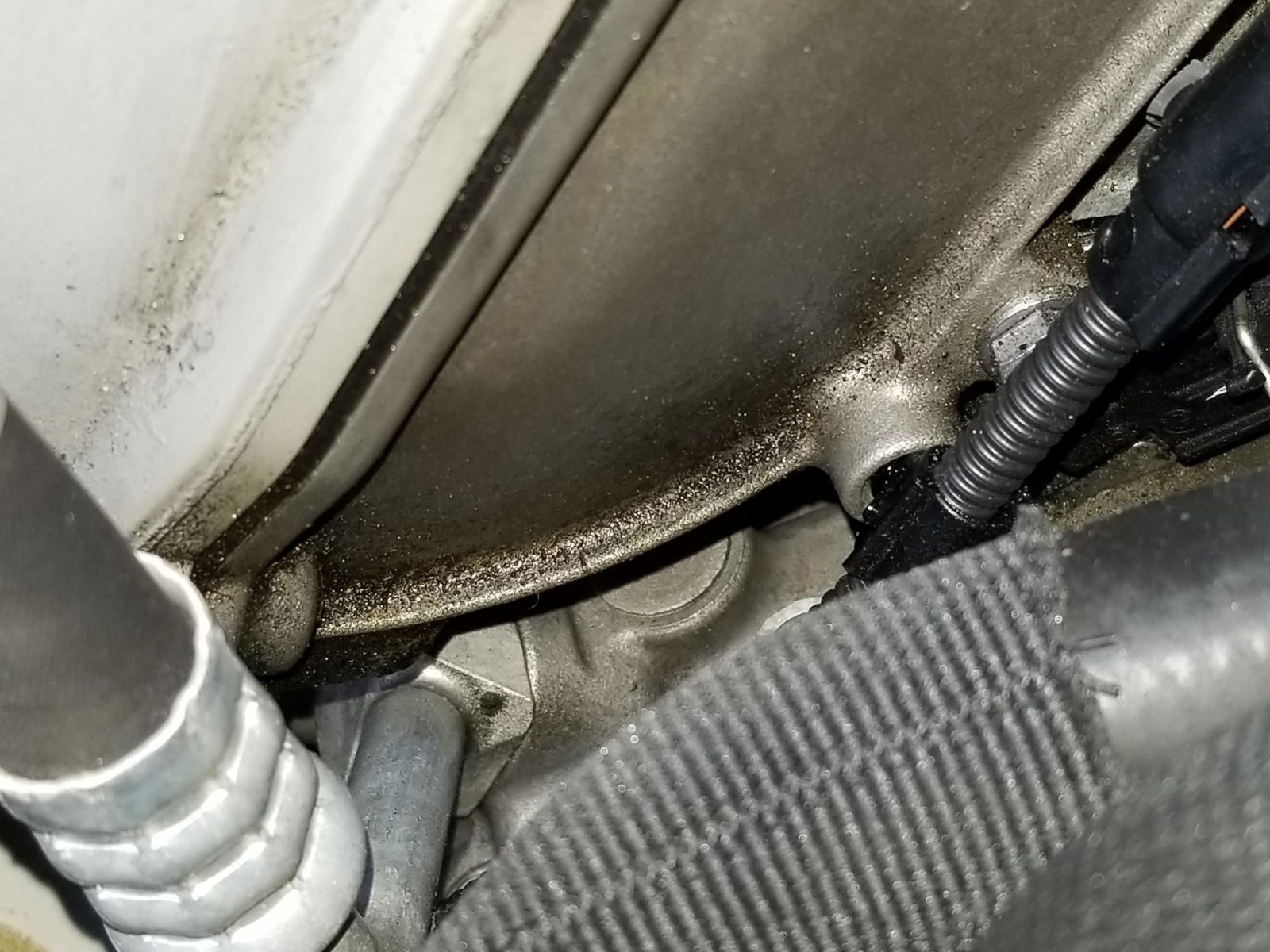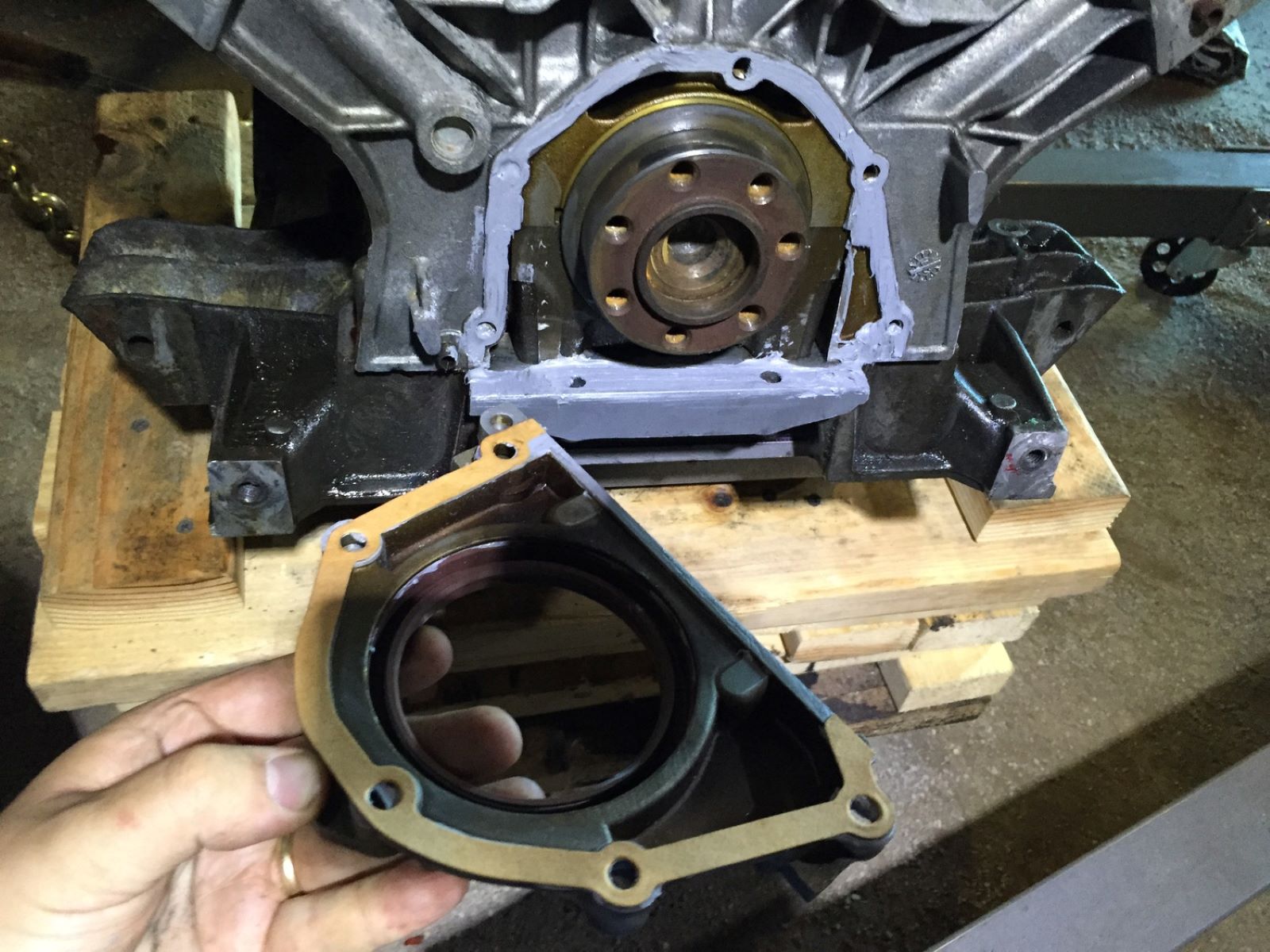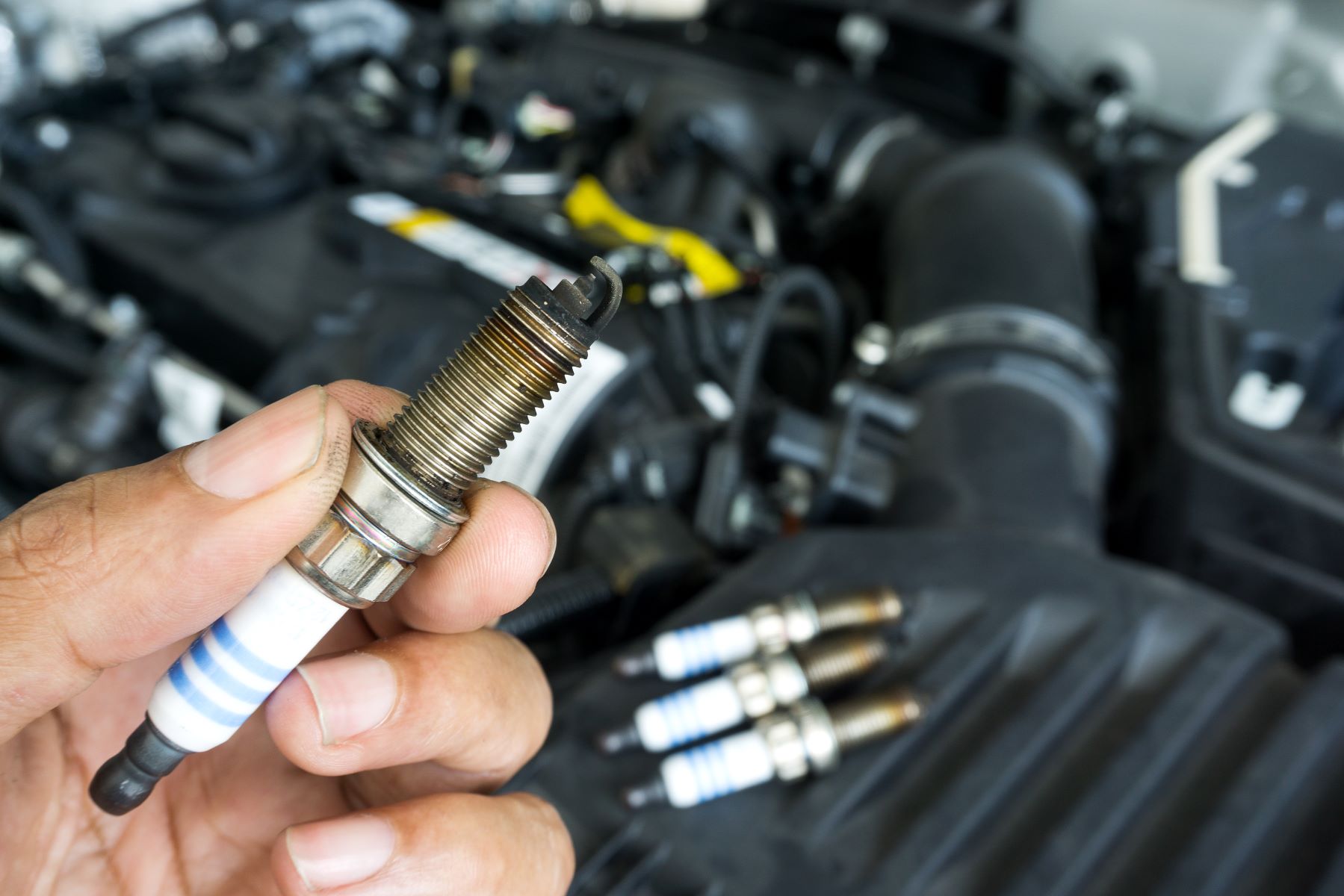Home>Automotive>The Truth About Valve Cover Gasket Leaks: Cost And Severity Revealed


Automotive
The Truth About Valve Cover Gasket Leaks: Cost And Severity Revealed
Published: January 25, 2024
Discover the truth about valve cover gasket leaks in the automotive industry, including the cost and severity of these common issues. Learn how to address this problem effectively.
(Many of the links in this article redirect to a specific reviewed product. Your purchase of these products through affiliate links helps to generate commission for Regretless.com, at no extra cost. Learn more)
Table of Contents
Introduction
A valve cover gasket leak can be a source of frustration for many vehicle owners. It's a common issue that can lead to a variety of problems if left unaddressed. Understanding the implications of a valve cover gasket leak, including the associated costs and severity, is crucial for maintaining the health and performance of your vehicle.
When a valve cover gasket fails, it can result in oil seepage or leakage from the engine's topmost cover. This gasket plays a vital role in preventing oil from escaping the engine and ensuring that it remains properly lubricated. However, over time, the gasket can deteriorate due to exposure to high temperatures and constant engine vibrations. As a result, it may develop cracks or become brittle, leading to oil leaks.
In this article, we will delve into the intricacies of valve cover gasket leaks, shedding light on the telltale signs of a leak, the costs associated with repairing it, and the potential severity of the issue. By gaining a deeper understanding of these aspects, you'll be better equipped to address valve cover gasket leaks promptly, thereby safeguarding your vehicle's engine and your wallet from further damage.
What is a valve cover gasket?
A valve cover gasket is a crucial component of an internal combustion engine, serving as a seal between the cylinder head and the valve cover. Its primary function is to prevent oil from leaking out of the engine and to maintain proper lubrication within the engine compartment. The gasket is typically made of rubber or cork, and it is designed to withstand high temperatures and the constant vibrations produced by the engine.
The valve cover gasket is positioned at the top of the engine, covering the valve train and other internal components. It plays a pivotal role in ensuring that oil is contained within the engine, preventing it from seeping out and causing potential damage. Without a properly functioning valve cover gasket, oil leaks can occur, leading to a variety of issues such as decreased lubrication, potential fire hazards, and environmental pollution.
In addition to preventing oil leaks, the valve cover gasket also helps to keep contaminants out of the engine. By forming a tight seal between the cylinder head and the valve cover, the gasket acts as a barrier against dirt, debris, and other external elements that could compromise the engine's performance and longevity.
Over time, the valve cover gasket may degrade due to exposure to high temperatures, engine oil, and the constant expansion and contraction of engine components. This degradation can manifest as cracks, brittleness, or loss of elasticity, ultimately leading to oil leaks. Regular maintenance and inspections are essential for detecting early signs of wear and tear on the valve cover gasket, allowing for timely replacement and preventing potential damage to the engine.
Understanding the role of the valve cover gasket is essential for vehicle owners, as it underscores the importance of maintaining this often-overlooked component. By ensuring that the valve cover gasket is in optimal condition, vehicle owners can mitigate the risk of oil leaks, preserve engine performance, and extend the overall lifespan of their vehicles.
Common signs of a valve cover gasket leak
Detecting a valve cover gasket leak in its early stages is crucial for preventing potential damage to the engine and addressing the issue promptly. Here are the common signs that may indicate a valve cover gasket leak:
-
Visible oil leaks: One of the most apparent signs of a valve cover gasket leak is the presence of oil on the exterior of the engine. This can manifest as oil drips or puddles beneath the vehicle after it has been parked. Additionally, oil may accumulate around the valve cover or along the engine block, indicating a potential leak from the gasket.
-
Burning oil smell: A distinct odor of burning oil inside the vehicle's cabin or emanating from the engine compartment can be indicative of a valve cover gasket leak. When oil seeps onto hot engine components, it can produce a noticeable burning smell as it evaporates upon contact with the heated surfaces.
-
Smoke from the engine: In more severe cases, a valve cover gasket leak can result in oil seeping onto the exhaust manifold or other hot engine parts, leading to the production of smoke. This smoke may be visible when the vehicle is running, particularly when the engine is warm and the vehicle is stationary.
-
Decreased oil levels: Regularly monitoring the vehicle's oil levels can provide insight into potential leaks. A sudden or unexplained decrease in oil levels, especially in the absence of visible leaks on the ground, may indicate a valve cover gasket leak. The lost oil may be escaping through the gasket and burning off during engine operation.
-
Engine misfires or rough idling: When oil leaks from the valve cover gasket, it can seep into the spark plug wells or onto the ignition coils, potentially causing electrical malfunctions. This can result in engine misfires, rough idling, or a noticeable decrease in overall engine performance.
-
Contaminated spark plugs: Inspecting the condition of the spark plugs can reveal oil contamination resulting from a valve cover gasket leak. If the spark plugs appear coated with oil or exhibit unusual discoloration, it may indicate that oil has been leaking into the combustion chamber due to a faulty gasket.
-
Visible gasket deterioration: During routine maintenance or inspections, visual examination of the valve cover gasket may reveal signs of deterioration, such as cracks, brittleness, or visible oil seepage around the gasket's edges.
Being vigilant for these common signs can aid in the early detection of a valve cover gasket leak, allowing for timely intervention and preventing potential engine damage and oil loss. Regular inspections and maintenance can help vehicle owners stay ahead of such issues, ensuring the optimal performance and longevity of their vehicles.
The cost of repairing a valve cover gasket leak
Repairing a valve cover gasket leak involves several factors that contribute to the overall cost of the repair process. The expenses associated with addressing a valve cover gasket leak can vary depending on the make and model of the vehicle, the labor rates charged by the repair facility, and the extent of the gasket damage. It's important for vehicle owners to understand the potential costs involved in order to make informed decisions and effectively manage their automotive maintenance budget.
The cost of the repair primarily consists of the price of the replacement valve cover gasket and the labor required to install it. The price of the gasket itself can range from approximately $20 to $50, depending on the vehicle's make and model. However, this cost may vary further if additional components, such as gasket sealant or other associated parts, are needed for the repair.
In terms of labor, the time required to access and replace the valve cover gasket can vary depending on the specific design of the engine and the accessibility of the gasket. Labor rates charged by automotive repair facilities also contribute to the overall cost. On average, the labor cost for replacing a valve cover gasket ranges from $150 to $400, taking into account the complexity of the repair and the prevailing labor rates in the local automotive service market.
It's important to note that while the valve cover gasket itself is relatively inexpensive, the labor costs can significantly impact the total expense of the repair. Additionally, if the leak has caused damage to other engine components or if there are associated issues that need to be addressed, such as oil contamination or degraded seals, these factors can further influence the overall repair costs.
Vehicle owners should consider obtaining multiple quotes from reputable automotive repair facilities to compare prices and ensure a competitive rate for the repair. It's also advisable to inquire about warranties on the replacement gasket and the labor performed, as this can provide added peace of mind and potential cost savings in the event of future issues related to the repair.
Understanding the cost of repairing a valve cover gasket leak enables vehicle owners to budget effectively for maintenance expenses and make informed decisions when addressing this common automotive issue. By being aware of the potential costs involved, vehicle owners can proactively manage their vehicle's maintenance needs and ensure the continued reliability and performance of their vehicles.
Severity of a valve cover gasket leak
A valve cover gasket leak, if left unattended, can have varying degrees of severity, potentially leading to detrimental consequences for the vehicle's engine and overall performance. Understanding the potential severity of a valve cover gasket leak is essential for vehicle owners to grasp the implications and take proactive measures to address the issue.
-
Risk of Engine Damage: A valve cover gasket leak can result in oil seepage onto critical engine components, such as the spark plugs, ignition coils, and exhaust manifold. This oil exposure can lead to electrical malfunctions, decreased engine performance, and potential fire hazards. If the leaking oil reaches the spark plugs, it can cause misfires and result in long-term damage to the engine's internal components, necessitating costly repairs and impacting the vehicle's reliability.
-
Environmental Impact: Oil leaks stemming from a faulty valve cover gasket can contribute to environmental pollution. When oil drips onto roads or parking surfaces, it can contaminate the surrounding environment and pose a hazard to wildlife. Additionally, the burning of leaked oil on hot engine surfaces can release harmful emissions into the atmosphere, further contributing to environmental degradation.
-
Safety Concerns: In more severe cases, a valve cover gasket leak can lead to the production of smoke from the engine compartment. This smoke can obstruct visibility for the driver and surrounding vehicles, posing a safety risk, especially in high-traffic or adverse weather conditions. Addressing the leak promptly is crucial for maintaining a safe driving environment and preventing potential accidents.
-
Long-term Financial Implications: Neglecting a valve cover gasket leak can result in increased oil consumption, leading to frequent oil top-ups and added expenses for the vehicle owner. Moreover, if the leak causes damage to other engine components or necessitates extensive repairs, the financial burden can escalate significantly. Timely intervention to repair the gasket can mitigate these long-term financial implications and preserve the vehicle's overall value.
-
Overall Engine Performance: A compromised valve cover gasket can impact the engine's performance and efficiency. Oil leaks can lead to decreased lubrication, potentially causing increased friction and wear on internal engine parts. This can result in diminished performance, reduced fuel economy, and a compromised driving experience. Addressing the leak promptly is essential for maintaining optimal engine performance and prolonging the vehicle's lifespan.
Understanding the severity of a valve cover gasket leak underscores the importance of swift intervention and preventive maintenance. By addressing the issue early on, vehicle owners can mitigate the risk of engine damage, environmental impact, safety concerns, and long-term financial implications. Regular inspections and proactive maintenance are key to preserving the vehicle's integrity and ensuring a safe, reliable driving experience.
Conclusion
In conclusion, understanding the intricacies of a valve cover gasket leak is imperative for vehicle owners who seek to maintain the health and performance of their vehicles. The valve cover gasket serves as a critical seal within the engine, preventing oil leaks and safeguarding the internal components from contaminants. Recognizing the common signs of a valve cover gasket leak, such as visible oil leaks, burning oil smell, and engine misfires, empowers vehicle owners to detect and address the issue promptly, thus preventing potential damage and mitigating long-term financial implications.
Moreover, comprehending the cost of repairing a valve cover gasket leak, including the expenses associated with gasket replacement and labor, enables vehicle owners to budget effectively for maintenance and make informed decisions when seeking repairs. By obtaining multiple quotes and inquiring about warranties, vehicle owners can ensure competitive rates and added peace of mind regarding the quality of the repair.
The severity of a valve cover gasket leak cannot be understated, as it encompasses risks of engine damage, environmental impact, safety concerns, and long-term financial implications. Addressing the issue early on is crucial for mitigating these risks and preserving the vehicle's integrity, performance, and overall value. Regular inspections and proactive maintenance play a pivotal role in safeguarding against the potential consequences of a valve cover gasket leak, ensuring a safe, reliable driving experience while minimizing the environmental impact of oil leaks.
In essence, the truth about valve cover gasket leaks lies in the proactive approach taken by vehicle owners to detect, address, and prevent these issues. By staying vigilant for the common signs, understanding the associated costs, and recognizing the potential severity, vehicle owners can effectively manage their vehicle's maintenance needs and safeguard against the detrimental consequences of a faulty valve cover gasket. Ultimately, this knowledge empowers vehicle owners to prioritize the health and longevity of their vehicles, ensuring optimal performance and reliability for years to come.














